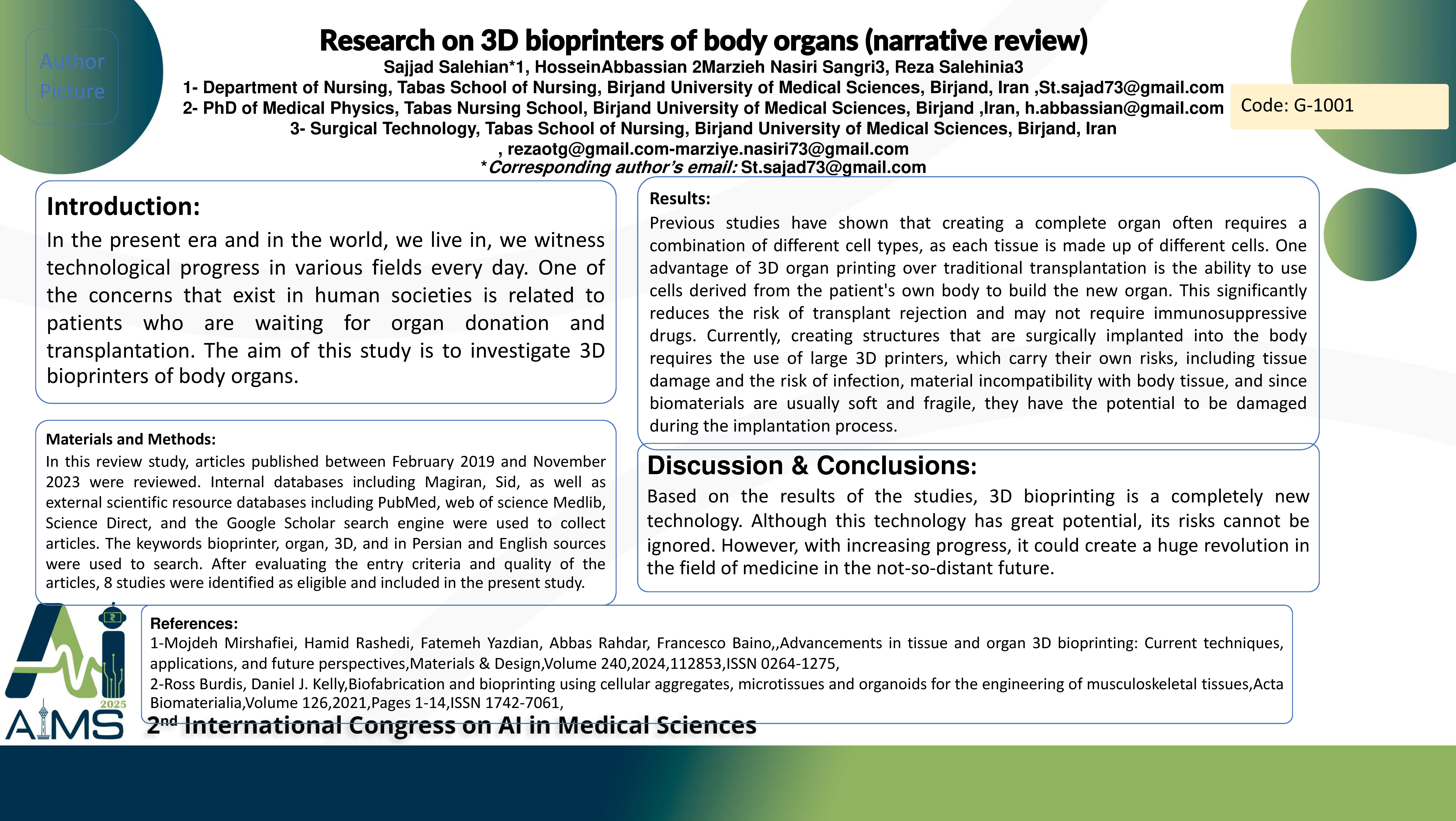Research on 3D bioprinters of body organs (narrative review)
Code: G-1075
Authors: رضاصالحی نیا, Sajjad Salehian * ℗, حسین عباسیان, مرضیه نصیری سنگری
Schedule: Not Scheduled!
Tag: Robotics in Surgery and Care
Download: Download Poster
Abstract:
Abstract
Background and aims: In the present era and in the world, we live in, we witness technological progress in various fields every day. One of the concerns that exist in human societies is related to patients who are waiting for organ donation and transplantation. The aim of this study is to investigate 3D bioprinters of body organs. Method: In this review study, articles published between February 2019 and November 2023 were reviewed. Internal databases including Magiran, Sid, as well as external scientific resource databases including PubMed, web of science Medlib, Science Direct, and the Google Scholar search engine were used to collect articles. The keywords bioprinter, organ, 3D, and in Persian and English sources were used to search. After evaluating the entry criteria and quality of the articles, 8 studies were identified as eligible and included in the present study. Results: Previous studies have shown that creating a complete organ often requires a combination of different cell types, as each tissue is made up of different cells. One advantage of 3D organ printing over traditional transplantation is the ability to use cells derived from the patient's own body to build the new organ. This significantly reduces the risk of transplant rejection and may not require immunosuppressive drugs. Currently, creating structures that are surgically implanted into the body requires the use of large 3D printers, which carry their own risks, including tissue damage and the risk of infection, material incompatibility with body tissue, and since biomaterials are usually soft and fragile, they have the potential to be damaged during the implantation process. Conclusion: Based on the results of the studies, 3D bioprinting is a completely new technology. Although this technology has great potential, its risks cannot be ignored. However, with increasing progress, it could create a huge revolution in the field of medicine in the not-so-distant future.
Keywords
Bioprinter, Organ, 3D
